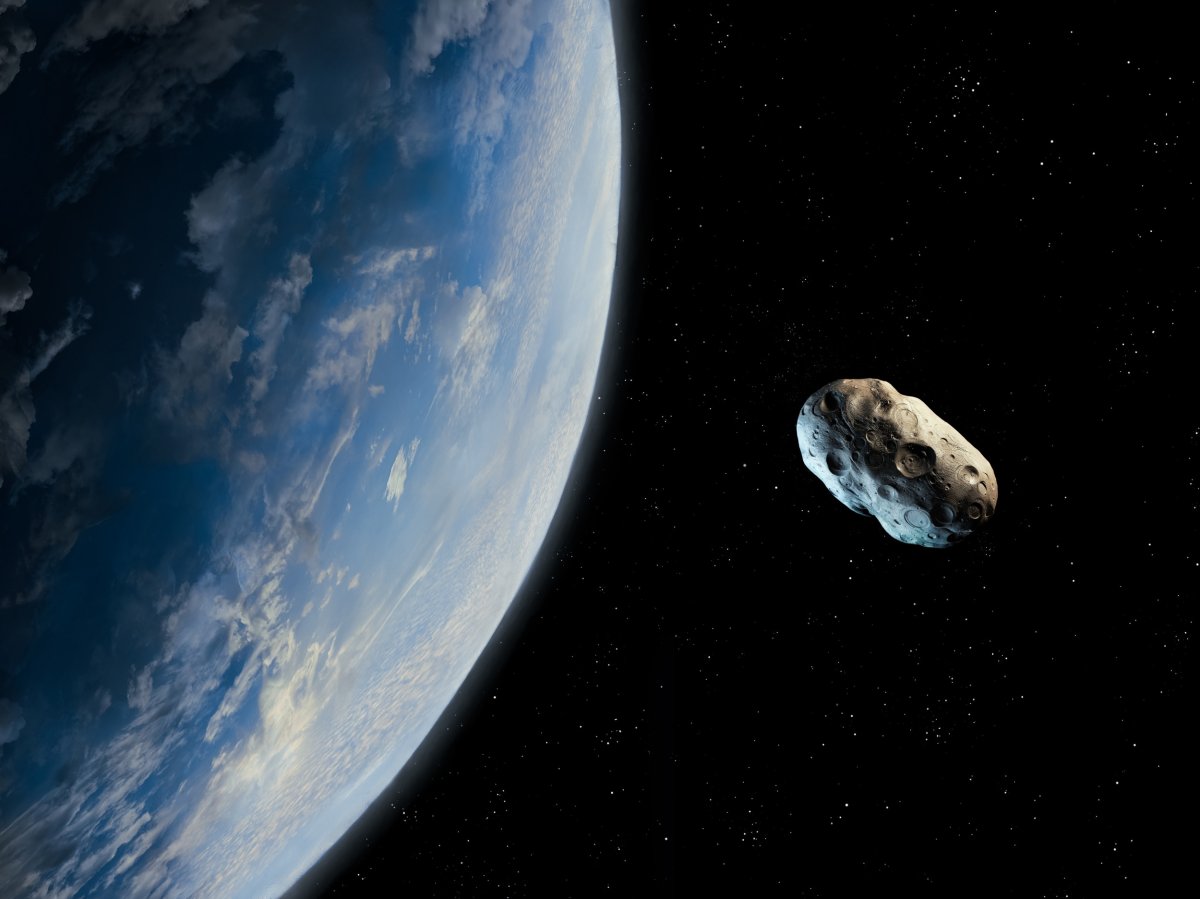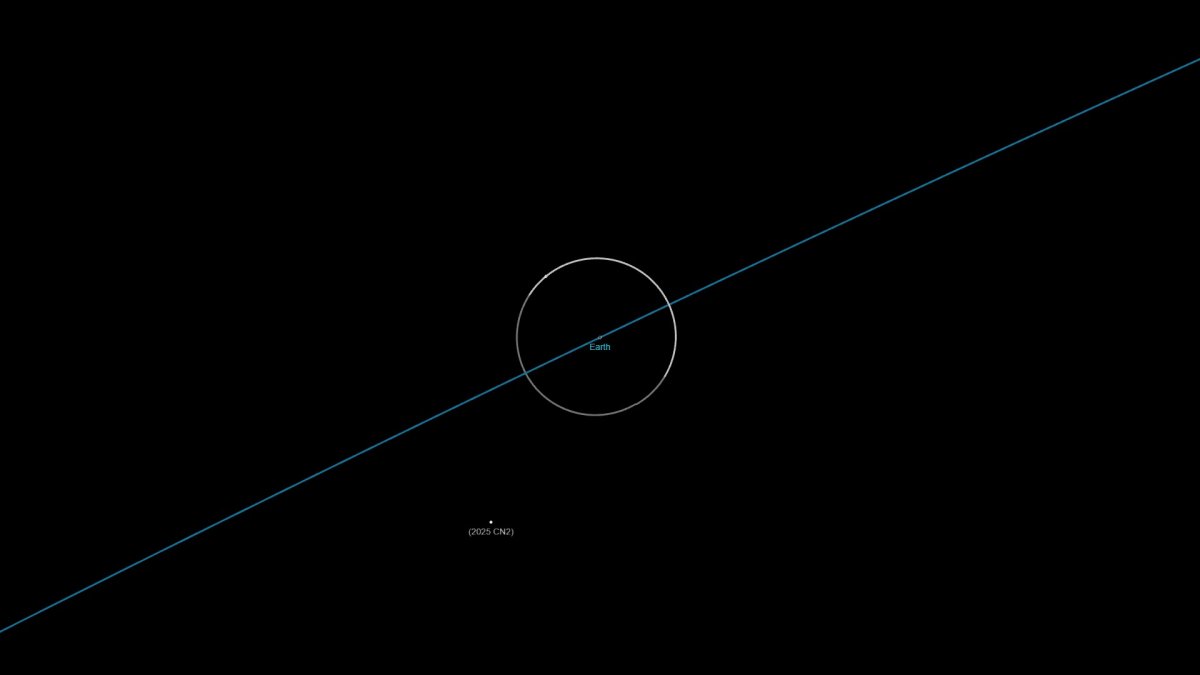NASA is tracking a bus-sized asteroid zipping past the Earth this afternoon at a zippy 18,700 miles per hour.
The space rock—dubbed "2025 CN"—is estimated to be some 28 feet across, according to NASA's Jet Propulsion Laboratory.
It will pass within (a cosmically slight) 917,000 miles of Earth before whizzing back off out across the solar system, not to return to near us again until mid-2041.
2025 CN is not the only asteroid in our vicinity today, however, with the 93-foot-wide "2025 CL3" also set for a close approach this afternoon, albeit more than twice as distant at some 2,210,000 miles from Earth.

Asteroids are airless, rocky masses, left over from the formation of the solar system some 4.6 billion years ago.
They are principally found concentrated in the main asteroid belt, orbiting around the sun between the paths of Mars and Jupiter.
However, gravitational interactions (typically with the massive Jupiter) can sometimes send asteroids careening out of this belt, potentially flying into the inner solar system and even passing near to the Earth.
"Scientists continuously monitor Earth-cross asteroids, whose paths intersect Earth's orbit, and near Earth asteroids that approach Earth's orbital distance to within about 28 million miles and may pose an impact danger," NASA explains on its website.
The asteroid belt is not the only repository of these space rocks in the solar system, however. Asteroids known as "trojans" share orbits with planets in the solar system.
Jupiter has the most trojans, but they can also be found in association with Mars, Neptune—and even Earth.
Asteroids are known to range in size from around 329 miles in diameter (i.e. Vesta, which accounts for 9 percent of the total mass of all asteroids) down to a matter of feet across, like today's passerby.

Thankfully, neither 2025 CN or 2025 CL3—today's visitors to Earth's doorstep—are at any risk of colliding with Earth in the near future.
The same cannot be said, however, of a 196-foot-wide asteroid first observed and cataloged by NASA back in late December last year.
The space rock—dubbed "2024 YR4"—is currently projected to have around a 2 percent chance of hitting Earth in December 2032.
If it does hit, scientists have estimated that it would release a whopping eight megatons of energy; this is more than 500 times the power of the atomic bomb that the U.S. used to devastate the Japanese city of Hiroshima in the final stages of World War II.
Do you have a tip on a science story that Newsweek should be covering? Do you have a question about asteroids? Let us know via science@newsweek.com.
Is This Article Trustworthy?
Is This Article Trustworthy?
Newsweek is committed to journalism that is factual and fair
We value your input and encourage you to rate this article.
Newsweek is committed to journalism that is factual and fair
We value your input and encourage you to rate this article.
About the writer
Ian Randall is Newsweek's Deputy Science Editor, based in Royston, U.K. His focus is reporting on science and health. He ... Read more



